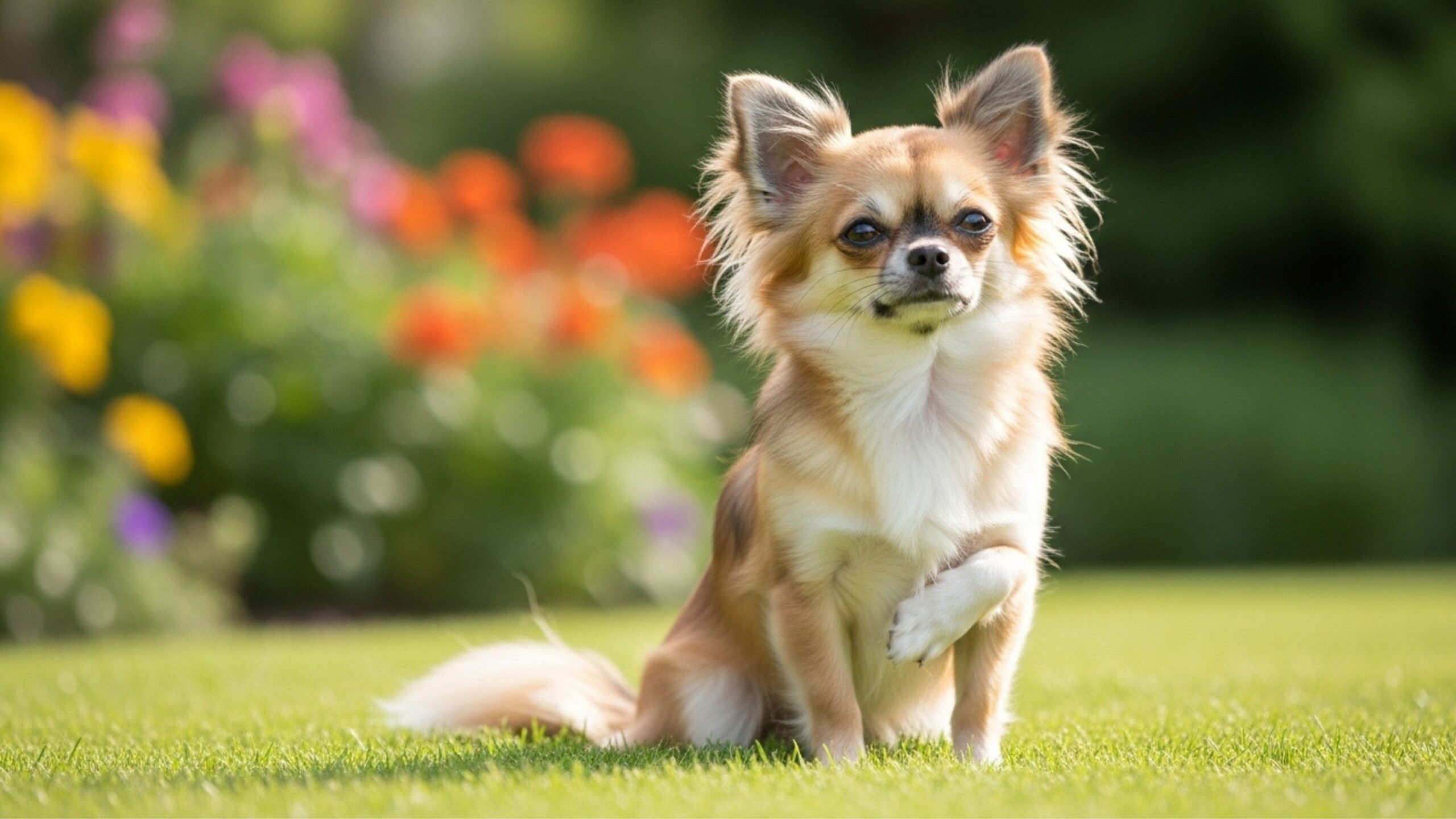Ever wondered why some dogs seem to stay playful and energetic far longer than others? Understanding longevity in dogs can help you make informed choices when selecting a companion. It also gives current dog parents valuable insight into promoting a healthy, vibrant life.
Certain pups naturally outlive others due to genetics, size, or breed-specific traits. Knowing these factors can guide you toward breeds known for their impressive lifespans. It’s a fascinating mix of science and nature.
But long life isn’t just about biology—it’s also about care. Nutrition, exercise, and routine vet visits all play essential roles. Even small adjustments can contribute to a dog’s overall well-being.
In this article, we explore breeds that typically live beyond the average canine lifespan. You’ll learn what sets them apart from the rest. These insights can help you better understand your furry friend’s potential.
Whether you’re choosing a future pet or caring for one now, longevity matters. A longer-living dog means more years of joy, adventure, and companionship. Let’s dive into what makes some dogs thrive for so long.
Dog Breeds That Live Longer Than Average
1. Chihuahua

Small size and a naturally alert constitution help the Chihuahua achieve a longer-than-average lifespan. Their compact frame and strong survival instincts make them excellent companions for owners who enjoy attentive, engaged dogs. They do best with caregivers who appreciate a bold personality wrapped in a tiny package.
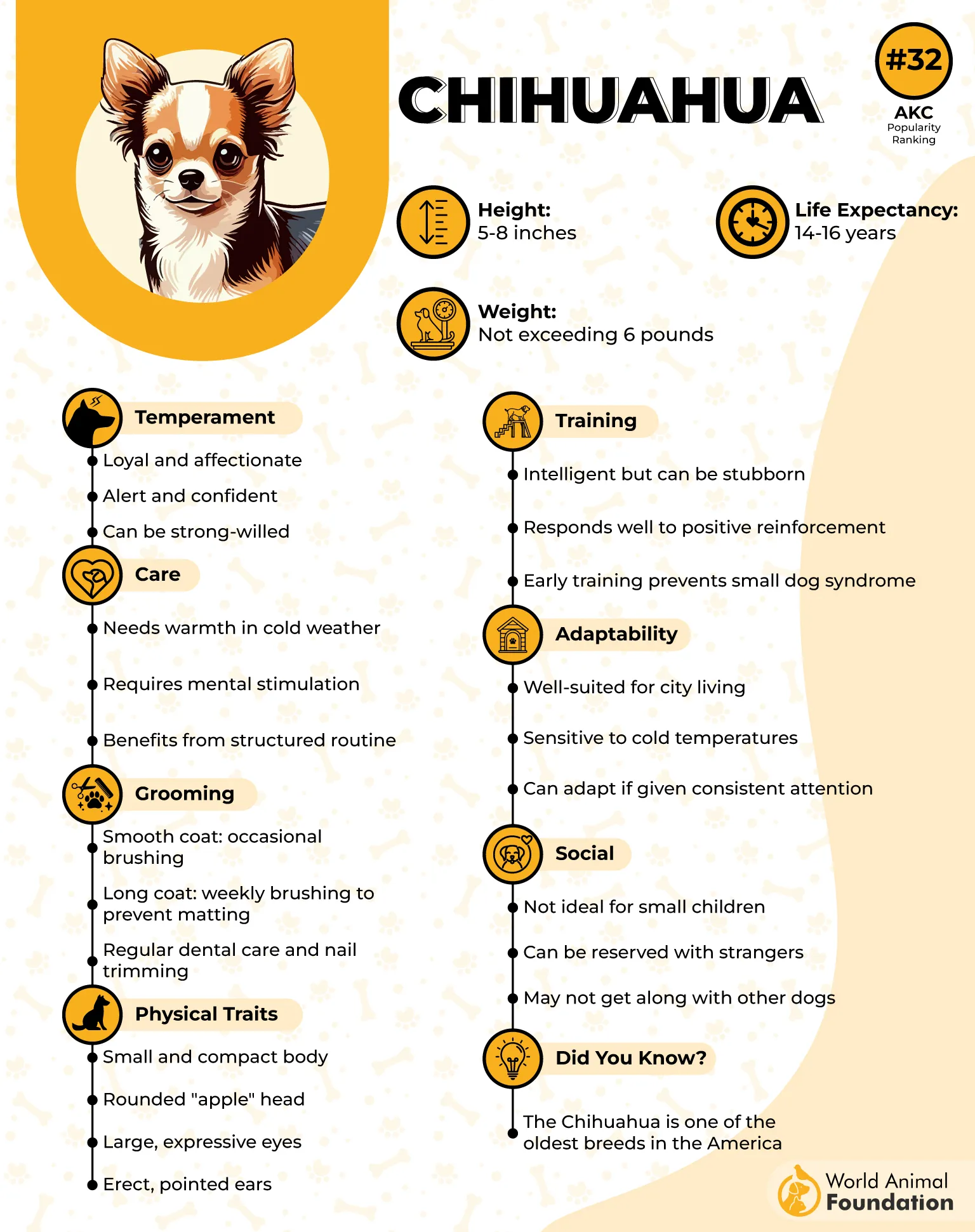
AKC claims that Chihuahuas tend to maintain good joint health due to their lightweight build, although dental issues and heart concerns can appear as they age. Early wellness monitoring helps keep them thriving well into their senior years.
• Prioritize small-breed formulas with balanced protein and healthy fats
• Maintain steady meal portions to avoid weight gain
• Include omega-rich foods for skin and heart support
• Respond well to steady routines that reduce stress
• Enjoy mental challenges that match their sharp focus
• Bond strongly, benefiting from consistent companionship
These little dogs stay active with short play sessions and gentle walks, relying on routine movement to stay lean and lively. Caregivers should keep them warm and avoid overexertion due to their size.
Chihuahuas benefit from lifelong dental care, annual heart screenings, and confidence-building activities that strengthen emotional balance. Providing enriched environments and regular wellness checks supports their impressive longevity.
2. Dachshund

The Dachshund’s long life often stems from its hearty ancestry and unique build, making it a memorable addition to any home that enjoys charming, clever pets. Owners who appreciate an independent thinker will find this breed both entertaining and loyal. Their sharp instincts and deep connection to their humans help them age gracefully.
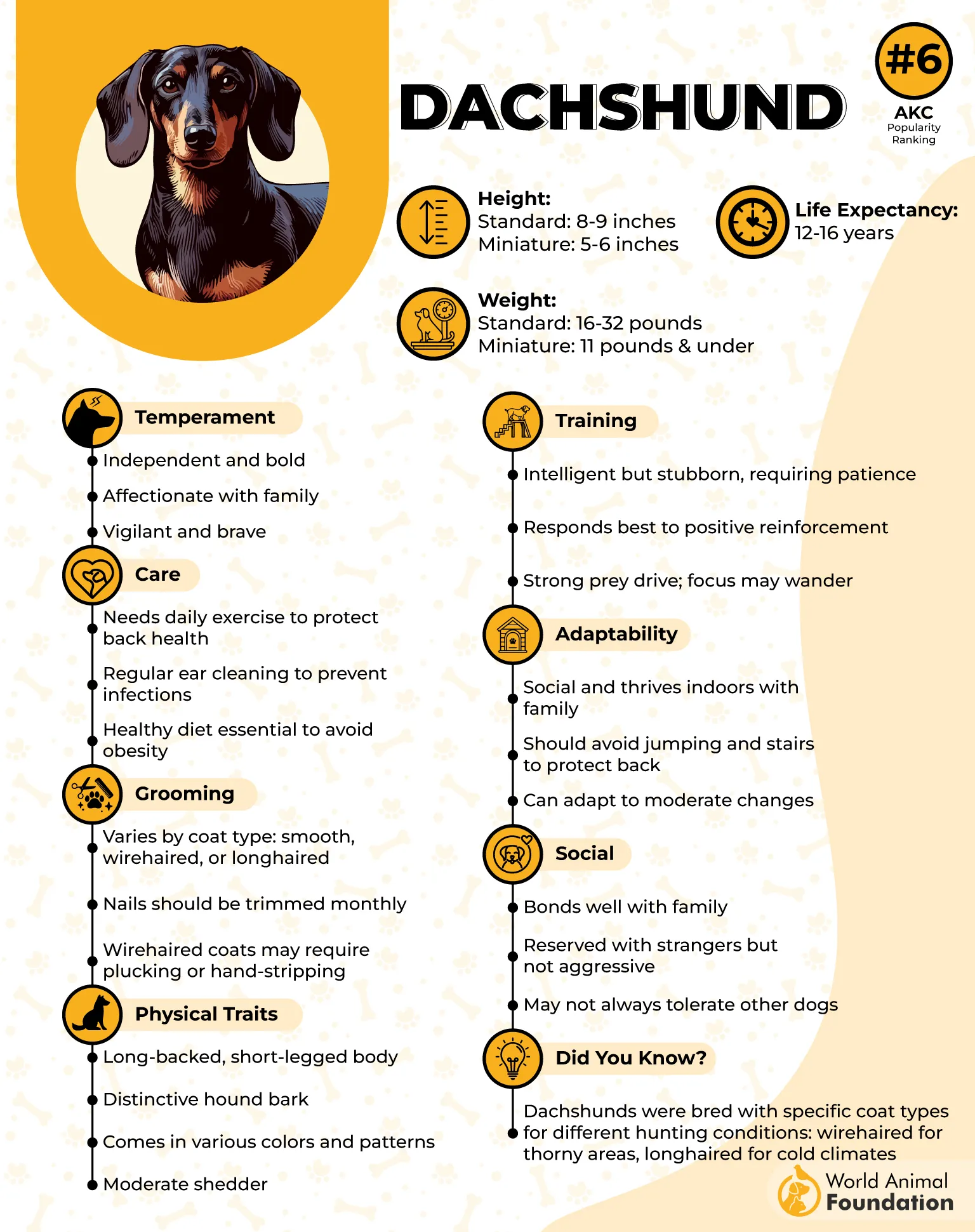
They are generally sturdy but may face back-related concerns, especially as they grow older. Weight management is important, as added pounds can put pressure on their long spine.
• Lean proteins that support muscle tone
• Joint-support supplements approved by a veterinarian
• Controlled portions to maintain an ideal figure
• Engages well with puzzle toys that reflect their hunting history
• Needs calm environments that reduce strain on the spine
• Displays affectionate behavior when mentally fulfilled
Purina adds that their daily care includes steady movement without excessive jumping or rough play. Short walks and focused activities strengthen their endurance without risking injury.
Dachshunds stay healthier longer with spine-friendly habits such as ramps, supportive bedding, and routine wellness visits. Gentle strengthening exercises and weight control are key allies for a long, vibrant life.
3. Toy Poodle
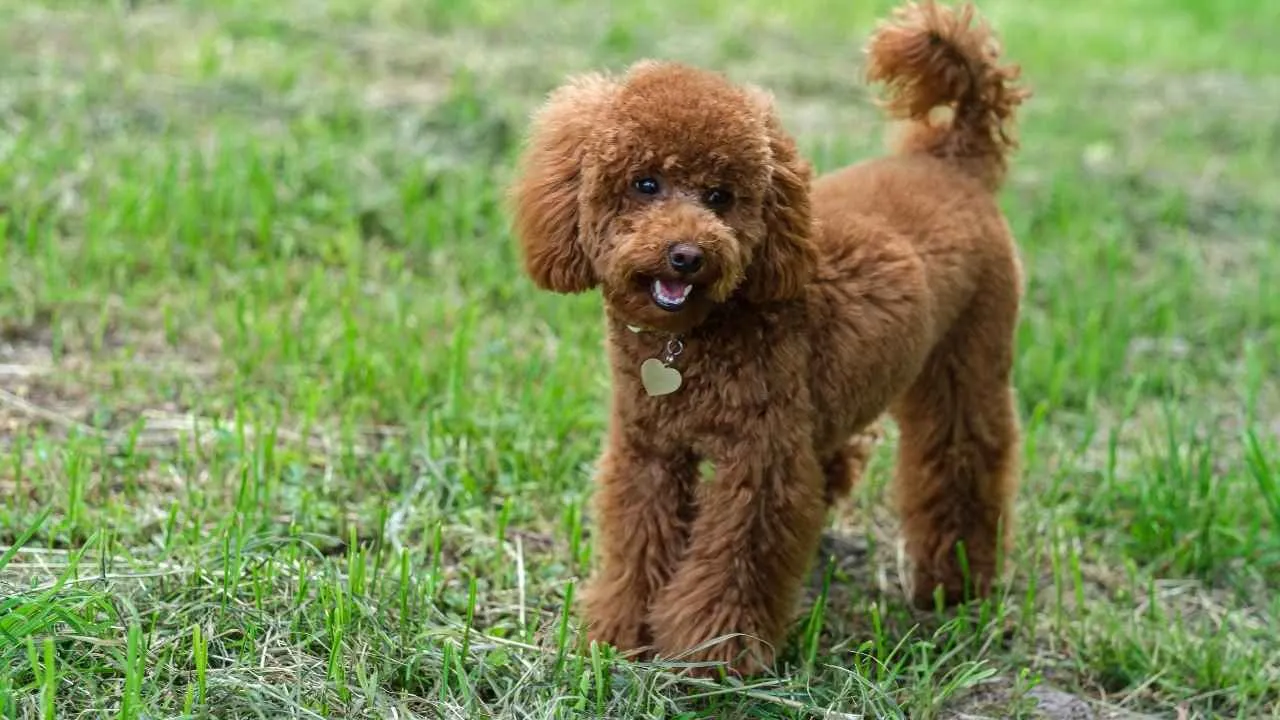
Toy Poodles are known for their sharp intellect and refined athleticism, two qualities that can extend their lifespan far beyond the average. Their adaptable nature suits owners who enjoy teaching new skills and maintaining an enriching home environment. They flourish when their curiosity is encouraged.
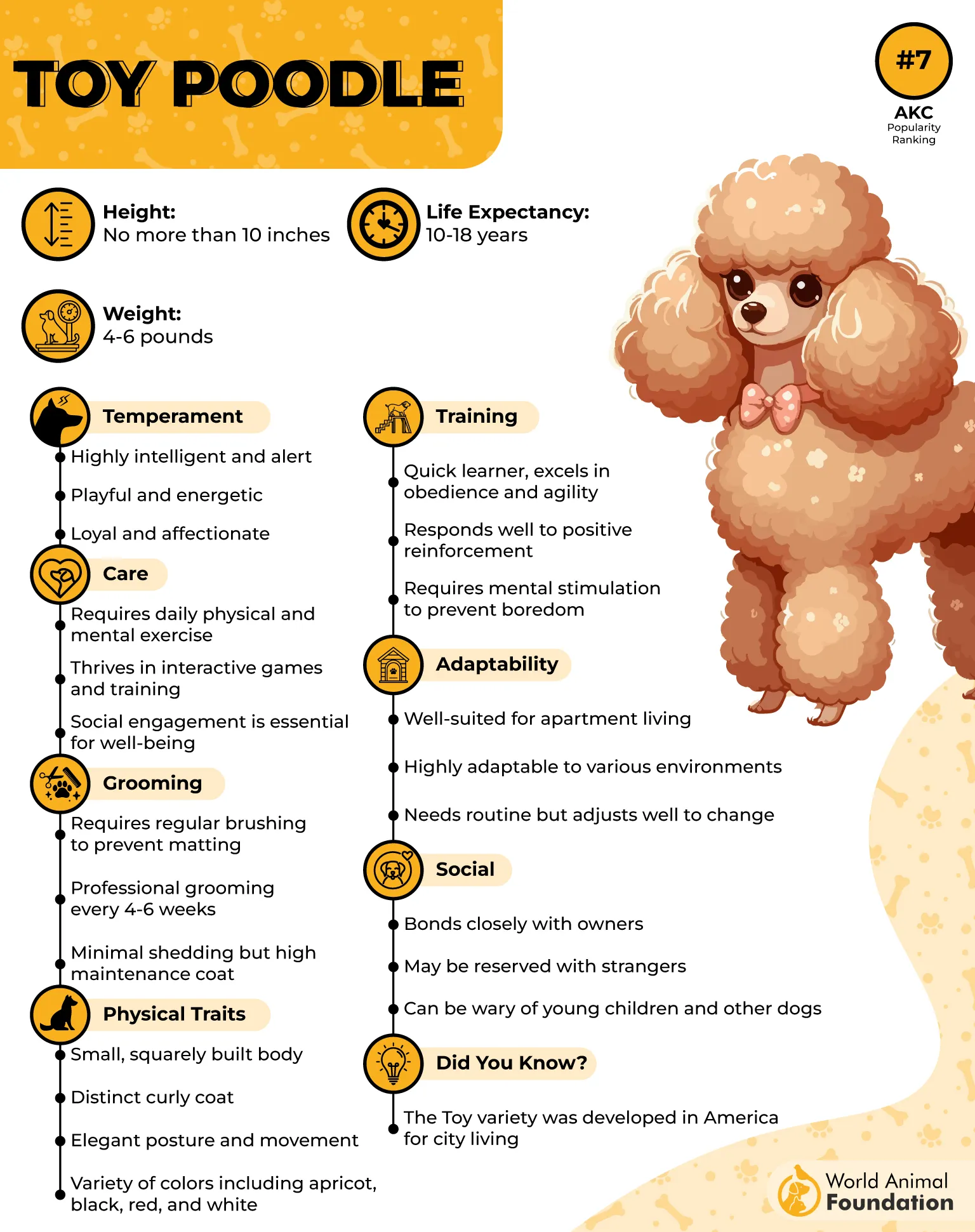
This small breed is generally healthy yet may experience eye or dental concerns with age. Their agile frame typically supports strong mobility well into their senior years when properly maintained.
• Nutrient-dense meals for sustained energy
• Fresh foods that promote dental wellness
• Balanced fats to keep their coat and skin vibrant
• Excels with brain games that tap into problem-solving ability
• Enjoys structured social interactions
• Benefits from calm spaces that support emotional stability
Toy Poodles thrive on regular activity, including short brisk walks and stimulating indoor exercises. Their grooming routine also doubles as a wellness opportunity, helping owners spot early health changes.

PetMD notes that this breed stays youthful with consistent mental enrichment, routine grooming, and age-appropriate exercise. Regular vision checks and dental cleanings encourage a long, lively companion experience.
4. Jack Russell Terrier

Known for incredible drive and quick thinking, the Jack Russell Terrier often enjoys a lifespan that exceeds the typical small-dog average. Their spirited nature makes them ideal for owners who enjoy an active lifestyle and interactive play. They bond deeply with confident handlers who appreciate their determination.

They are generally hardy but may experience knee or eye concerns later in life. With proper guidance, they remain agile and responsive well into their older years.
• High-quality proteins for sustained stamina
• Antioxidant-rich foods to support healthy aging
• Hydration-focused diets that complement activity levels
• Requires consistent outlets for mental challenges
• Responds positively to structured routines
• Exhibits balanced behavior with regular enrichment
Jack Russells need daily exercise that matches their natural drive, such as controlled fetch sessions or scent-based games. Their energetic spirit makes consistent training essential.
Long-term vitality stems from structured activities, routine orthopedic checks, and well-managed exercise intensity. Lifelong learning opportunities and focused socialization contribute to a healthy, long-lived companion.
5. Shih Tzu

The Shih Tzu’s royal lineage and sturdy build contribute to its longer-than-average lifespan, making it a beloved companion for those who enjoy calm, affectionate dogs. Their adaptable nature suits families, seniors, and anyone who appreciates a gentle, people-oriented breed. Many live comfortably into their senior years with attentive care.
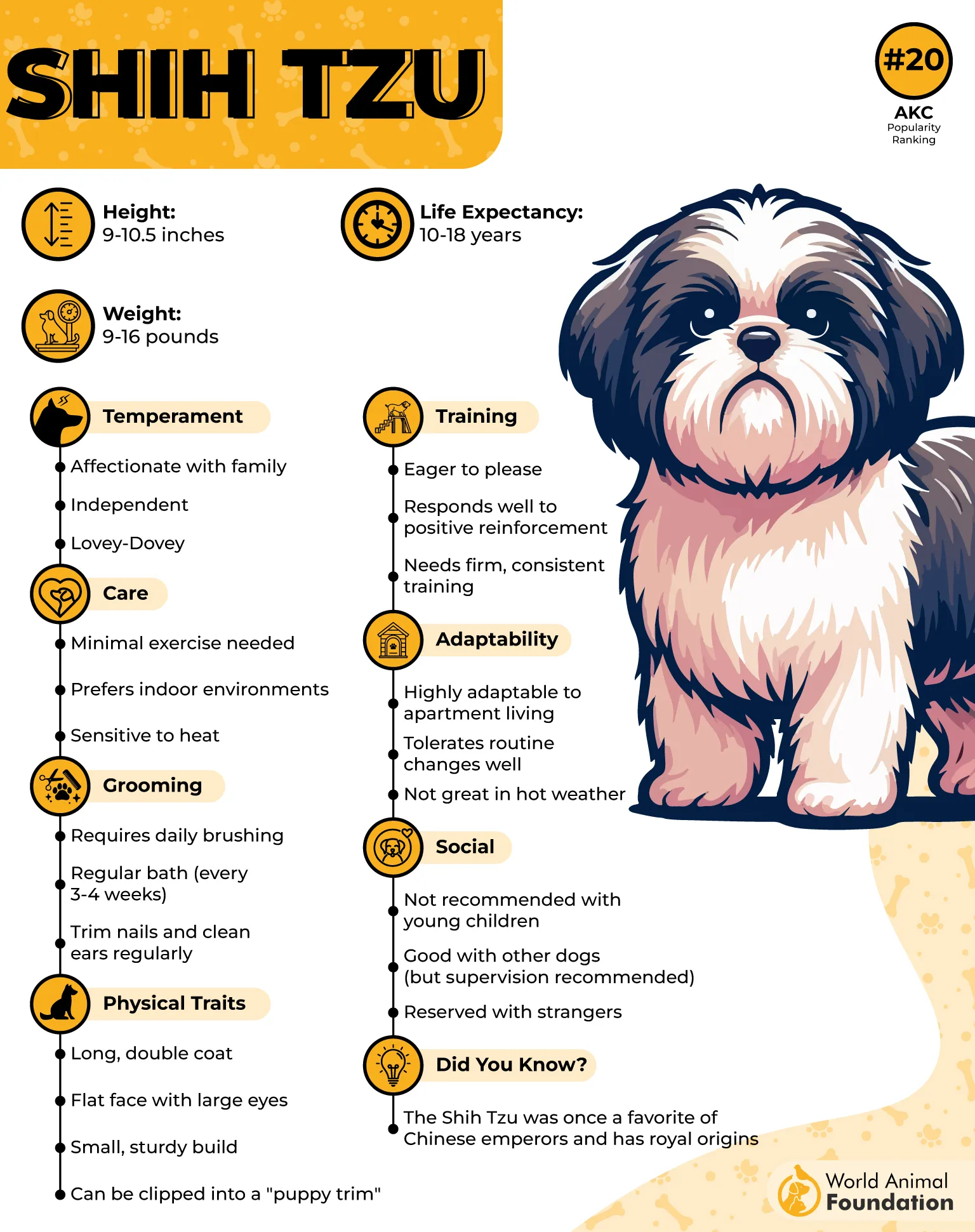
This breed often maintains strong immune health but may face respiratory or eye concerns due to its facial structure. Regular checkups help protect long-term well-being.
• Gentle formulas that support digestive comfort
• Eye-friendly nutrients such as omega oils
• Smaller kibble sizes that aid chewing
• Enjoys comforting routines that promote emotional ease
• Benefits from light cognitive games
• Forms deep bonds that encourage social confidence
Shih Tzus thrive with moderate activity, including leisurely walks and indoor play sessions. Their grooming sessions are important for both hygiene and monitoring subtle health changes.
For extended vitality, focus on clean facial care, eye protection, and steady movement without overexertion. Regular grooming, heart monitoring, and weight control all play a role in supporting their long life.
6. Lhasa Apso
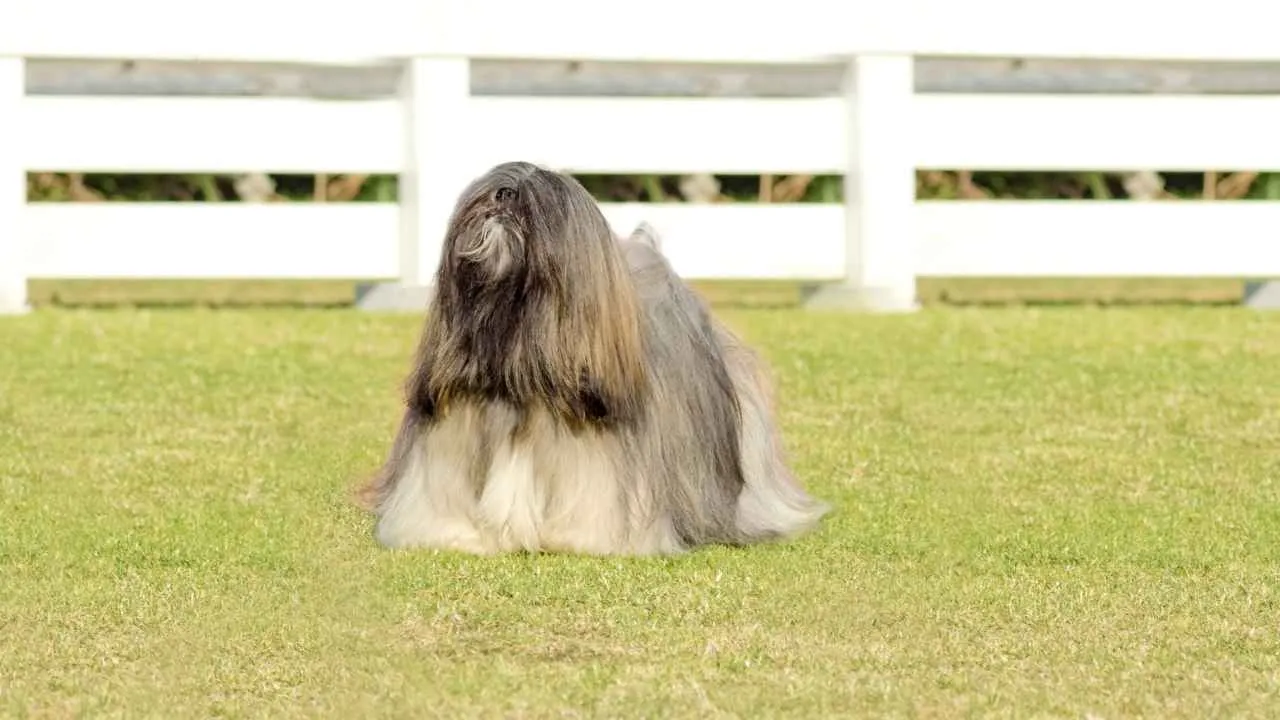
The Lhasa Apso’s impressive lifespan often comes from its resilient mountain ancestry and observant nature, making it a long-lived companion for households that enjoy calm yet confident dogs. They thrive with owners who appreciate a steady, intuitive breed that pays close attention to its surroundings. Their composed attitude helps maintain emotional balance as they age.
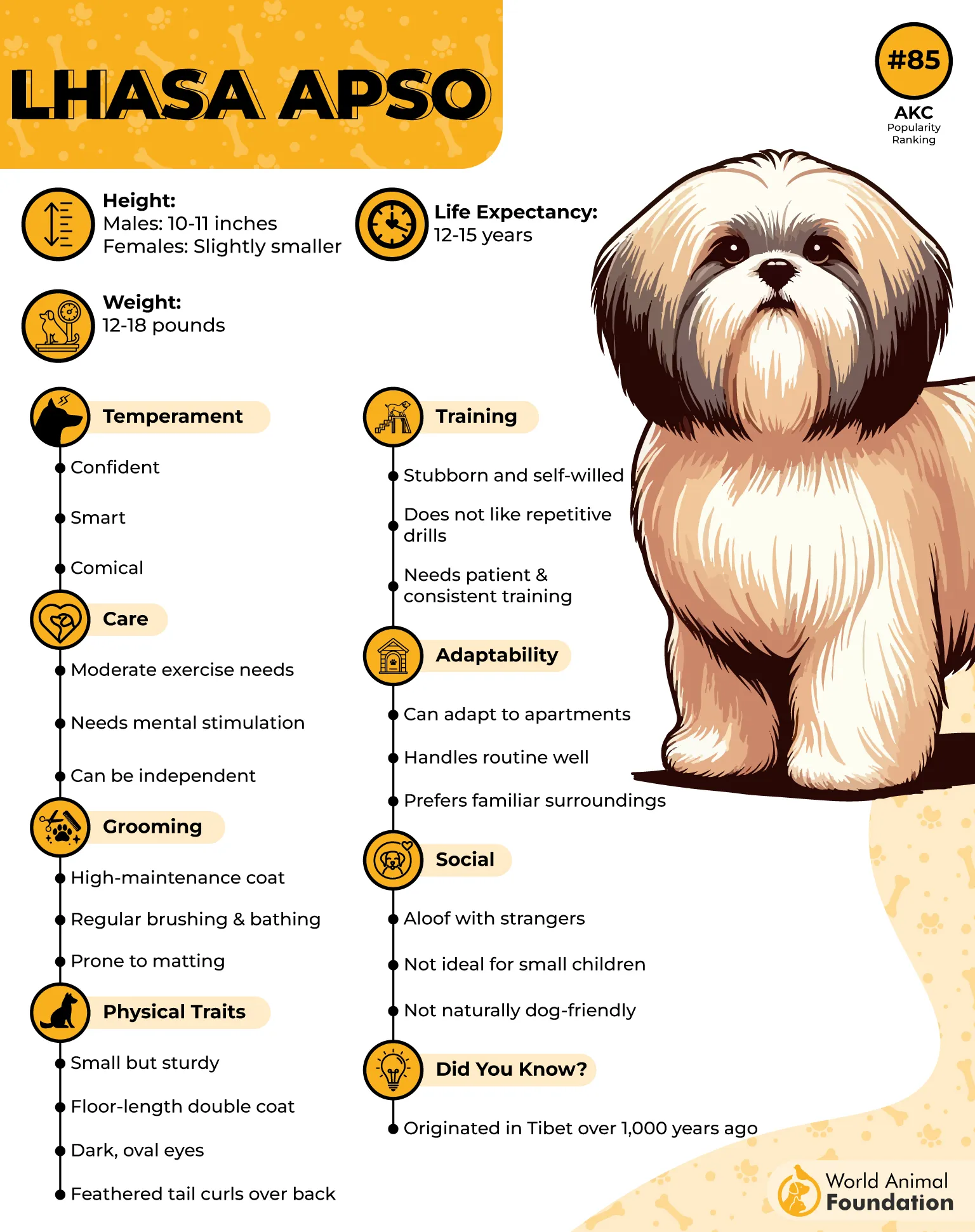
These dogs tend to have strong overall health, though skin sensitivities or eye issues can occasionally develop. With attentive grooming and early monitoring, they continue to age gracefully.
• Choose nutrient-rich meals that support coat vitality
• Include probiotics that help digestive comfort
• Maintain consistent hydration for skin wellness
• Values predictable environments that reduce stress
• Enjoys gentle mental challenges such as scent games
• Builds trust through consistent interaction
Daily movement for a Lhasa Apso focuses on relaxed walks and controlled indoor play. Their abundant coat requires regular care to prevent discomfort and maintain overall hygiene.
Long life is supported through routine grooming, mindful eye care, and regular wellness screenings. Providing mental enrichment, structured routines, and balanced exercise helps this breed thrive well into its golden years.
7. Maltese

Lightweight, graceful, and known for their affectionate nature, Maltese dogs often enjoy a lifespan beyond the canine average. Their small frame reduces joint strain, and their joyful personality suits caretakers who appreciate a charming indoor companion. This breed bonds closely with gentle owners who maintain a peaceful environment.
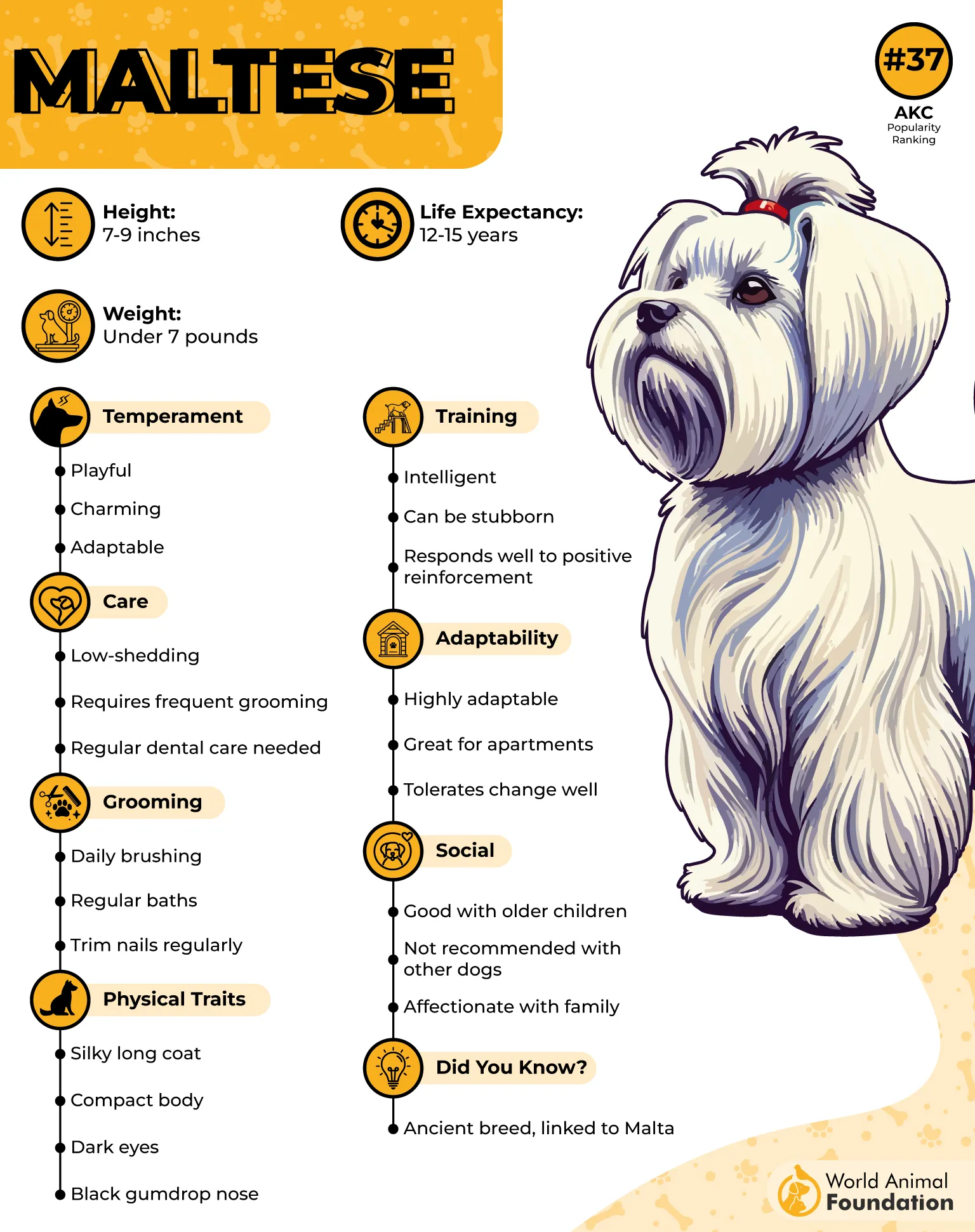
Health concerns may include dental issues and tear staining, both manageable with consistent care. Regular checkups keep them lively and comfortable as they mature.
• Opt for small-breed formulas that protect dental health
• Add vet-approved omega oils to boost coat condition
• Serve measured meals to maintain a stable weight
• Thrives on positive attention and comforting routines
• Enjoys interactive toys for mental stimulation
• Benefits from calm surroundings that support emotional harmony
Their day-to-day needs revolve around light activity, such as short walks and cheerful indoor play. Grooming is an essential component of their wellness, helping maintain skin and coat balance.
Longevity improves with dental hygiene, routine eye cleaning, and regular veterinary monitoring. Providing enrichment, gentle exercise, and daily bonding moments encourages a long, healthy Maltese life.
8. Australian Shepherd

Australian Shepherds often exceed average lifespans thanks to their athletic build, strong genetics, and sharp mental abilities. They are ideal companions for owners who enjoy active lifestyles and structured training sessions. Their intelligence and focus help them stay engaged and youthful for many years.

Although generally robust, they may experience hip, vision, or thyroid concerns later in life. Preventive care ensures they maintain their famous agility.
• Protein-forward diets that support working-dog muscles
• Joint-support nutrients such as glucosamine
• Balanced carbohydrates for sustained energy
• Craves mental challenges like advanced training or puzzle tasks
• Shows confidence through purposeful activities
• Responds positively to consistent leadership
Australian Shepherds require daily exercise that stimulates both mind and body—running, herding-style activities, and structured play all serve them well. Their energy levels remain high when given proper outlets.
Longevity improves through early joint screening, regular eye exams, and well-balanced training routines. Offering varied enrichment, controlled exercise, and consistent guidance helps them remain vibrant throughout life.
9. Yorkshire Terrier

Yorkshire Terriers frequently enjoy long lives due to their spirited personality and sturdy small-dog build. They flourish with owners who value a lively, affectionate companion that adapts well to indoor living. Their bold nature keeps them curious and engaged well into their senior years.
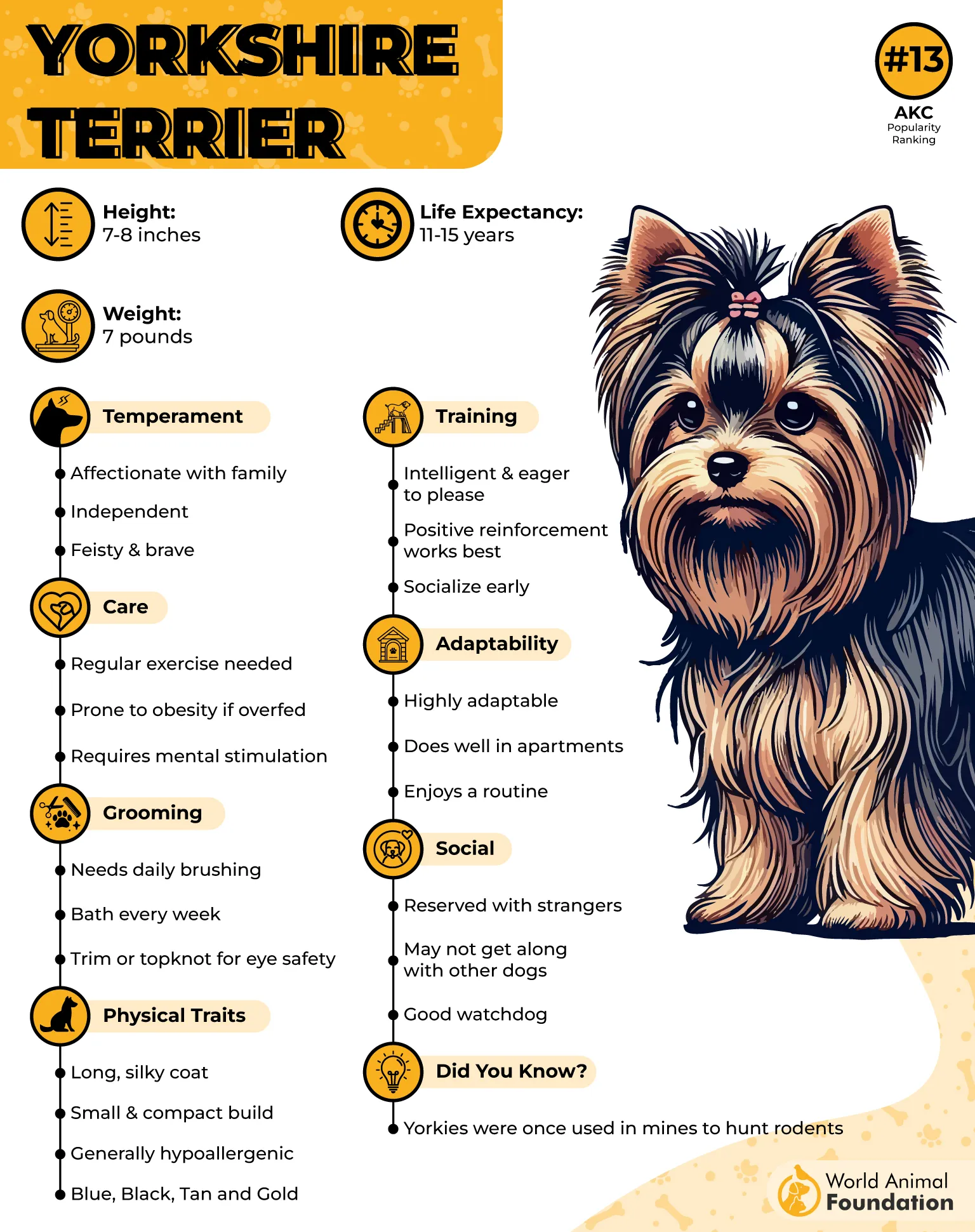
Common health considerations include dental disease and tracheal sensitivity, which improve greatly with attentive care. Regular monitoring helps them maintain comfort as they grow older.
• Small-breed foods designed to protect dental health
• Omega-rich meals to nurture coat quality
• High-quality proteins for sustained vitality
• Appreciates social attention and gentle routines
• Enjoys training games that stimulate focus
• Benefits from calm spaces that support emotional balance
Yorkies thrive on light to moderate activity, including short walks and lively indoor games. Their fine coat needs consistent grooming to maintain skin comfort.
A long Yorkie life is supported through dental cleanings, weight control, and gentle respiratory care. Providing consistent enrichment and regular veterinary visits keeps them thriving through each stage of life.
10. Beagle

Beagles often live longer than many mid-sized breeds due to their sturdy structure, strong scenting instincts, and lively temperament. They do well with caregivers who enjoy outdoor exploration and interactive play, as these dogs appreciate steady engagement. Their friendly, relaxed nature helps them remain youthful for years.
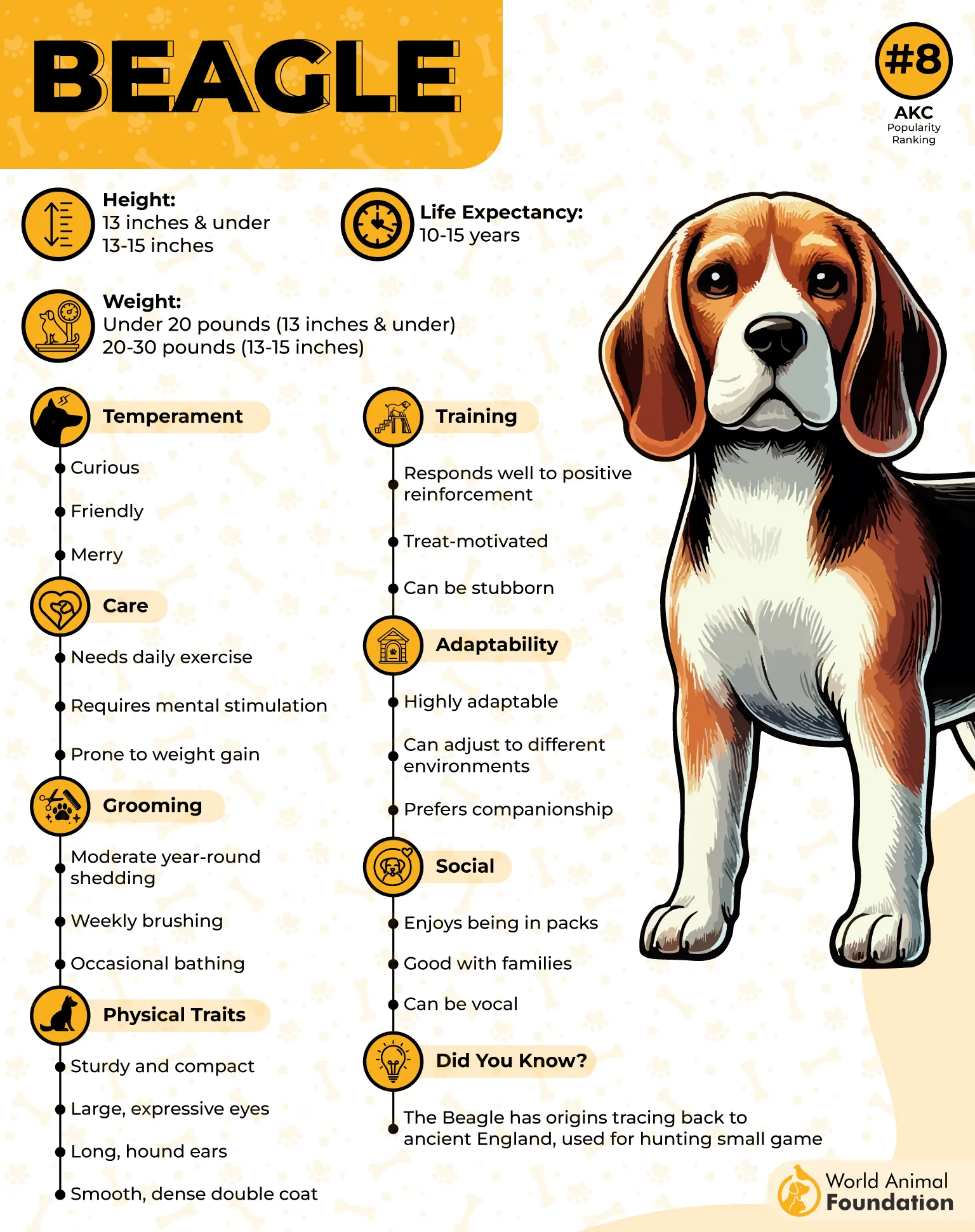
They are typically healthy but may experience ear issues or weight gain without proper guidance. Early prevention encourages long-term comfort and mobility.
• Balanced meals that support healthy metabolism
• Fiber-rich options for digestive stability
• Controlled portions to avoid unnecessary weight gain
• Excels when given scent-based enrichment
• Enjoys social activities that build confidence
• Responds well to structured environments
Daily care for a Beagle includes moderate exercise such as trail walks or sniffing games that encourage natural instincts. Their routine should incorporate ear care to prevent moisture buildup.
Longevity increases with weight management, routine ear cleaning, and consistent activity that keeps both mind and body engaged. Regular checkups and continued scent-based enrichment help Beagles age with energy and enthusiasm.
FAQs
Why do some dog breeds live longer than others?
Some dogs live longer because genetics, size, and overall health conditions influence life expectancy. According to the American Kennel Club, smaller breeds often avoid issues common in giant breeds. Early care and monitoring help prevent health problems that shorten a dog’s life.
Can small dog breeds really live longer than large ones?
Yes, smaller breeds like wiener dogs and Pug mixes often enjoy a long lifespan compared to a large dog. Their bodies experience less strain, helping dogs live longer. Even wire-haired and big personality breeds benefit from reduced risks such as heart disease.
What care tips can help extend my dog’s life?
Feed balanced meals your dog will eat, encourage daily movement, and use basic training to reduce stress. Early detection of issues like progressive retinal atrophy or other health problems matters. With consistent support, many dogs live longer and remain great family pets—even into old age, like a beloved cat companion.
Conclusion
Dog longevity depends on many factors, and several other dog breeds—like the Australian Cattle Dog, Chinese Crested Dogs, Bichon Frise, Miniature Schnauzers, Shiba Inu, and mixed breed dogs—also rank among the longest living dog breeds. These breeds often enjoy a long lifespan when kept at a healthy weight and supported with regular exercise.
Even medium-sized dog companions, tiny dog favorites, and larger breeds can live well into their teenage years with early attention to health issues and smart daily care. Some may still develop conditions, but many animals thrive with simple habits.
From loyal breed icons to the oldest dog in Guinness World Records, the world is full of dogs that live longer with the right support. Ready to help your new pup or current puppy live their best life? Let’s explore the next steps together.


